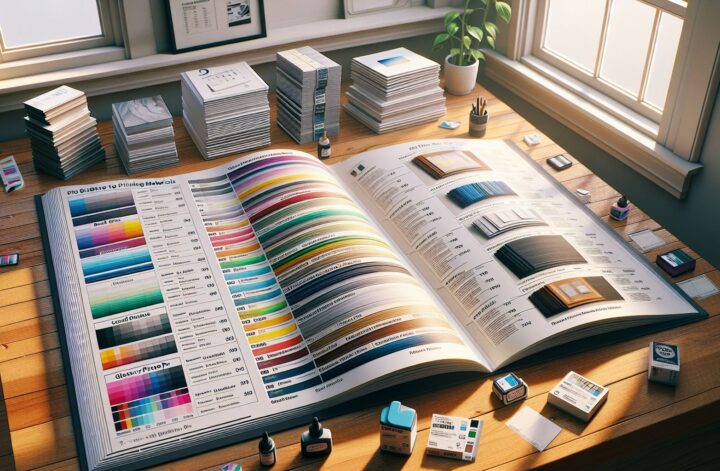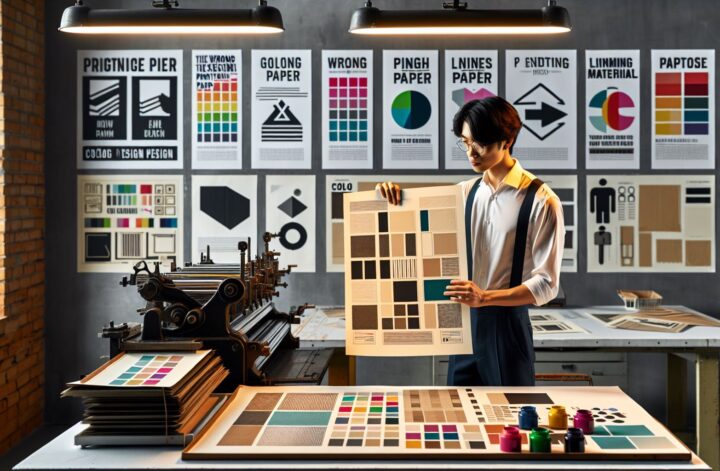In today’s digital age, we often forget about the significance of printing materials. Whether you are a business owner, a student, or an everyday consumer, the materials you choose for printing can have a substantial impact on the final outcome of your documents. In this blog post, we will explore the importance of selecting the right printing materials and how they can make a difference in various settings.
Introduction to Printing Materials
Printing materials refer to the paper and other media used in the process of printing. The choice of materials can significantly affect the quality, durability, and overall impression of the final product. From standard office documents to marketing materials and personal projects, each printing requirement demands careful consideration of the materials involved.
Factors to Consider when Choosing Printing Materials
To make an informed decision about printing materials, several factors should be taken into account. These factors include:
1. Purpose of the Printed Materials
The purpose of the document can dictate the type of material you should use. For instance, a professional business proposal might require a heavy-weight, high-quality paper to leave a lasting impression, while an internal memo might be suitable for printing on standard copy paper. Understanding the purpose of your printed materials will help you narrow down the options and make an appropriate choice.
2. Type of Printing
Different printing methods, such as inkjet, laser, or offset printing, have specific requirements for the materials used. Some printers are optimized for particular types of paper, so it’s essential to check the manufacturer’s recommendations for your specific device. Using incompatible materials can lead to poor print quality, increased risk of paper jams, or even damage to your printer.
3. Appearance and Aesthetics
The desired look and feel of the printed materials should also guide your choice of materials. Consider factors such as color reproduction, brightness, opacity, and smoothness. Colors may appear differently on various types of paper due to their absorbency and reflectivity properties. Similarly, the brightness and opacity of the paper can affect the readability of the printed text.
4. Durability and Longevity
Depending on the intended usage and lifespan of the printed materials, durability and longevity may be significant considerations. For example, if you’re creating marketing brochures to distribute at events, you’ll want a paper that can withstand handling, while long-term documents or archival materials may require acid-free or archival-grade paper to prevent degradation over time.
5. Environmental Impact
In today’s environmentally conscious world, the ecological footprint of our choices cannot be ignored. Many printing materials are certified by organizations such as the Forest Stewardship Council (FSC) or made from recycled materials. Opting for sustainable and eco-friendly printing materials can support your commitment to environmental responsibility.
Types of Printing Materials
Now that we understand the importance of choosing the right printing materials, let’s explore some common types that are widely available.
1. Standard Copy Paper
Standard copy paper is the most basic and commonly used printing material. It is lightweight and suitable for everyday printing needs, such as internal documents, drafts, or personal use. However, it may not be ideal for color-rich printing, high-resolution images, or documents that require durability.
2. Cardstock
Cardstock is heavier and more durable than standard copy paper. It is commonly used for printing business cards, postcards, brochures, and other marketing materials. With its sturdiness and professional appearance, cardstock can enhance the overall quality and longevity of your printed materials.
3. Photo Paper
As the name suggests, photo paper is designed specifically for printing photographs and other high-resolution images. It comes in different finishes, such as glossy or matte, to provide the desired look and feel for your prints. The coating on photo paper allows for vibrant colors and sharp details, making it a preferred choice for professional photographers and anyone looking to print high-quality images.
4. Transparency Film
Transparency film, also known as overhead projector film, is a specialized material used for printing transparencies. Commonly used in presentations and educational settings, transparency film can be printed on with either inkjet or laser printers. It offers a clear and sharp image, allowing for easy projection.
5. Specialty Papers
Specialty papers include a wide range of materials such as textured papers, metallic papers, or even handmade papers. These unique options can add a touch of elegance and creativity to your printed materials. Whether you’re printing wedding invitations, certificates, or art prints, specialty papers can elevate your design and make a lasting impression.
Conclusion
Choosing the right printing materials is crucial for achieving the desired outcome, whether it’s a professional document, personal project, or marketing collateral. By considering factors such as purpose, printing method, appearance, durability, and environmental impact, you can make an informed decision that enhances the quality and effectiveness of your printed materials. So, next time you reach for the printer, take a moment to think about the materials you are using and the impact they can have on the final result.


